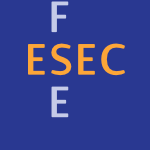29 papers:
 CASE-2015-LyuWC #algorithm #heuristic #integer #programming
CASE-2015-LyuWC #algorithm #heuristic #integer #programming- Mixed integer programming model and heuristic algorithm for production planning of continuous casting and hot rolling (ML, ZW, FTSC), pp. 1503–1508.
 PLDI-2015-KangHMGZV #c #memory management
PLDI-2015-KangHMGZV #c #memory management- A formal C memory model supporting integer-pointer casts (JK, CKH, WM, DG, SZ, VV), pp. 326–335.
 HPDC-2015-ChengIGB #data analysis #in the cloud #named
HPDC-2015-ChengIGB #data analysis #in the cloud #named- CAST: Tiering Storage for Data Analytics in the Cloud (YC, MSI, AG, ARB), pp. 45–56.
 CIKM-2014-LeeLM #named #social #streaming
CIKM-2014-LeeLM #named #social #streaming- CAST: A Context-Aware Story-Teller for Streaming Social Content (PL, LVSL, EEM), pp. 789–798.
 CASE-2013-FantiIRU #analysis #scheduling #simulation
CASE-2013-FantiIRU #analysis #scheduling #simulation- A simulation based analysis of production scheduling in a steelmaking and continuous casting plant (MPF, GI, GR, WU), pp. 150–155.
 ICPR-2012-MatsukawaOS #image #normalisation
ICPR-2012-MatsukawaOS #image #normalisation- Illumination normalization of face images with cast shadows (TM, TO, YS), pp. 1848–1851.
 ICST-2012-WahlerFSJN #automation #embedded #named #testing
ICST-2012-WahlerFSJN #automation #embedded #named #testing- CAST: Automating Software Tests for Embedded Systems (MW, EF, RS, RJ, KN), pp. 457–466.
 KDD-2011-LiLLNTF #cyber-physical #named
KDD-2011-LiLLNTF #cyber-physical #named- ThermoCast: a cyber-physical forecasting model for datacenters (LL, CJML, JL, SN, AT, CF), pp. 1370–1378.
 SIGIR-2011-KimFH #information management
SIGIR-2011-KimFH #information management- BlogCast effect on information diffusion in a blogosphere (SWK, CF, JH), pp. 1149–1150.
 OOPSLA-2011-SonMS #named #security #what
OOPSLA-2011-SonMS #named #security #what- RoleCast: finding missing security checks when you do not know what checks are (SS, KSM, VS), pp. 1069–1084.
 SAC-2011-HuangC #retrieval #video
SAC-2011-HuangC #retrieval #video- An event-based video retrieval system by combining broadcasting baseball video and web-casting text (YFH, LWC), pp. 846–852.
 CASE-2010-SunCL #algorithm #scheduling #using
CASE-2010-SunCL #algorithm #scheduling #using- Scheduling of steel-making and continuous casting system using the surrogate subgradient algorithm for lagrangian relaxation (LS, TC, PBL), pp. 885–890.
 ICPR-2010-MoroTU #detection #using
ICPR-2010-MoroTU #detection #using- Detection of Moving Objects with Removal of Cast Shadows and Periodic Changes Using Stereo Vision (AM, KT, KU), pp. 328–331.
 ICPR-2010-QinLLL
ICPR-2010-QinLLL- Moving Cast Shadow Removal Based on Local Descriptors (RQ, SL, ZL, SZL), pp. 1377–1380.
 ICPR-2010-ScandaliarisVS #analysis #comparative #detection #image #video
ICPR-2010-ScandaliarisVS #analysis #comparative #detection #image #video- Comparative Analysis for Detecting Objects Under Cast Shadows in Video Images (JS, MV, AS), pp. 4577–4580.
 ESOP-2009-SiekGT #design #higher-order
ESOP-2009-SiekGT #design #higher-order- Exploring the Design Space of Higher-Order Casts (JGS, RG, WT), pp. 17–31.
 ICEIS-HCI-2007-IshikawaYY #multi #novel #using
ICEIS-HCI-2007-IshikawaYY #multi #novel #using- Novel View Telepresence with High-Scalability Using Multi-Casted Omni-Directional Videos (TI, KY, NY), pp. 148–156.
 ICPR-v1-2006-LiuHTW #component
ICPR-v1-2006-LiuHTW #component- Cast Shadow Removal with GMM for Surface Reflectance Component (ZL, KH, TT, LW), pp. 727–730.
 ICPR-v1-2006-ZhangFX #detection #image #orthogonal #using
ICPR-v1-2006-ZhangFX #detection #image #orthogonal #using- Detection of moving cast shadows using image orthogonal transform (WZ, XF, YX), pp. 626–629.
 ICPR-v4-2006-SmithH #using
ICPR-v4-2006-SmithH #using- Estimating Cast Shadows using SFS and Class-based Surface Completion (WAPS, ERH), pp. 86–90.
 ICPR-v4-2006-ZhangFY #detection
ICPR-v4-2006-ZhangFY #detection- Moving cast shadows detection based on ratio edge (WZ, XF, XY), pp. 73–76.
 ICFP-2004-LammelJ #scrap your boilerplate
ICFP-2004-LammelJ #scrap your boilerplate- Scrap more boilerplate: reflection, zips, and generalised casts (RL, SLPJ), pp. 244–255.
 ECOOP-2004-FindlerFF #contract #semantics #type system
ECOOP-2004-FindlerFF #contract #semantics #type system- Semantic Casts: Contracts and Structural Subtyping in a Nominal World (RBF, MF, MF), pp. 364–388.
 ICPR-v1-2002-BrancaAD #segmentation
ICPR-v1-2002-BrancaAD #segmentation- Cast Shadow Removing in Foreground Segmentation (AB, GA, AD), pp. 214–217.
 ICFP-2000-Weirich #functional #type safety
ICFP-2000-Weirich #functional #type safety- Type-safe cast: functional pearl (SW), pp. 58–67.
 PLDI-1999-YongHR #analysis #pointer #source code
PLDI-1999-YongHR #analysis #pointer #source code- Pointer Analysis for Programs with Structures and Casting (SHY, SH, TWR), pp. 91–103.
 ESEC-FSE-1999-SiffCBKR #c
ESEC-FSE-1999-SiffCBKR #c- Coping with Type Casts in C (MS, SC, TB, KK, TWR), pp. 180–198.
 SIGMOD-1998-RamakrishnanD #network
SIGMOD-1998-RamakrishnanD #network- The PointCast Network (SR, VD), p. 520.
 ICSE-1978-Lindstrom #parsing #top-down #using
ICSE-1978-Lindstrom #parsing #top-down #using- Control Structure Aptness: A Cast Study Using Top-Down Parsing (GL), pp. 5–12.
 CASE-2015-LyuWC #algorithm #heuristic #integer #programming
CASE-2015-LyuWC #algorithm #heuristic #integer #programming PLDI-2015-KangHMGZV #c #memory management
PLDI-2015-KangHMGZV #c #memory management HPDC-2015-ChengIGB #data analysis #in the cloud #named
HPDC-2015-ChengIGB #data analysis #in the cloud #named CIKM-2014-LeeLM #named #social #streaming
CIKM-2014-LeeLM #named #social #streaming CASE-2013-FantiIRU #analysis #scheduling #simulation
CASE-2013-FantiIRU #analysis #scheduling #simulation ICPR-2012-MatsukawaOS #image #normalisation
ICPR-2012-MatsukawaOS #image #normalisation ICST-2012-WahlerFSJN #automation #embedded #named #testing
ICST-2012-WahlerFSJN #automation #embedded #named #testing KDD-2011-LiLLNTF #cyber-physical #named
KDD-2011-LiLLNTF #cyber-physical #named SIGIR-2011-KimFH #information management
SIGIR-2011-KimFH #information management OOPSLA-2011-SonMS #named #security #what
OOPSLA-2011-SonMS #named #security #what SAC-2011-HuangC #retrieval #video
SAC-2011-HuangC #retrieval #video CASE-2010-SunCL #algorithm #scheduling #using
CASE-2010-SunCL #algorithm #scheduling #using ICPR-2010-MoroTU #detection #using
ICPR-2010-MoroTU #detection #using ICPR-2010-QinLLL
ICPR-2010-QinLLL ICPR-2010-ScandaliarisVS #analysis #comparative #detection #image #video
ICPR-2010-ScandaliarisVS #analysis #comparative #detection #image #video ESOP-2009-SiekGT #design #higher-order
ESOP-2009-SiekGT #design #higher-order ICEIS-HCI-2007-IshikawaYY #multi #novel #using
ICEIS-HCI-2007-IshikawaYY #multi #novel #using ICPR-v1-2006-LiuHTW #component
ICPR-v1-2006-LiuHTW #component ICPR-v1-2006-ZhangFX #detection #image #orthogonal #using
ICPR-v1-2006-ZhangFX #detection #image #orthogonal #using ICPR-v4-2006-SmithH #using
ICPR-v4-2006-SmithH #using ICPR-v4-2006-ZhangFY #detection
ICPR-v4-2006-ZhangFY #detection ICFP-2004-LammelJ #scrap your boilerplate
ICFP-2004-LammelJ #scrap your boilerplate ECOOP-2004-FindlerFF #contract #semantics #type system
ECOOP-2004-FindlerFF #contract #semantics #type system ICPR-v1-2002-BrancaAD #segmentation
ICPR-v1-2002-BrancaAD #segmentation ICFP-2000-Weirich #functional #type safety
ICFP-2000-Weirich #functional #type safety PLDI-1999-YongHR #analysis #pointer #source code
PLDI-1999-YongHR #analysis #pointer #source code ESEC-FSE-1999-SiffCBKR #c
ESEC-FSE-1999-SiffCBKR #c SIGMOD-1998-RamakrishnanD #network
SIGMOD-1998-RamakrishnanD #network ICSE-1978-Lindstrom #parsing #top-down #using
ICSE-1978-Lindstrom #parsing #top-down #using









